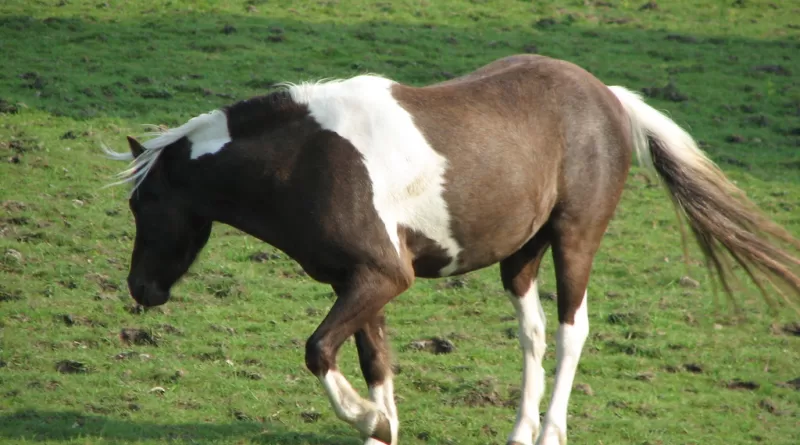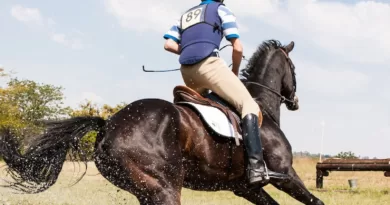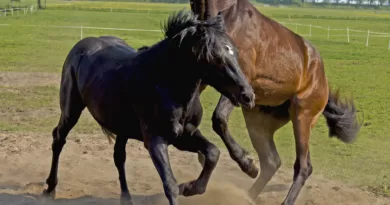What Does It Mean When a Horse Has Been Sored
Signs of a Sored Horse
One of the most telling signs of a sored horse is their unusual and abnormal movement. A horse that has been subjected to soring may exhibit an irregular gait, with a noticeable inconsistency in their step. They may appear to be favoring certain limbs or displaying an exaggerated action, such as lifting or dragging their feet. These anomalies in their movement can be an indication that the horse is experiencing discomfort or pain.
In addition to changes in gait, a sored horse may also exhibit certain behavioral signs. They may become irritable, restless, or show signs of aggressiveness. This change in behavior is often a result of the pain or discomfort they are experiencing. It is crucial for horse owners and handlers to be attentive to any sudden shifts in behavior, as this could be a red flag that the horse is suffering from soring.
Causes of Horse Soring
Horse soring is a cruel and inhumane practice that involves intentionally inflicting pain on a horse’s limbs to alter its gait and achieve a desired high-stepping movement. There are several factors that contribute to the causes of horse soring, including the desire for competitive advantage in certain show rings and the pressure to achieve an exaggerated trot or canter. Trainers and owners who engage in horse soring often do so with the belief that it will give their horse a competitive edge and increase their chances of winning in certain events.
One of the main causes of horse soring is the use of irritants and caustic substances on a horse’s legs. These substances, such as mustard oil or diesel fuel, are applied to the horse’s lower limbs to cause inflammation, pain, and swelling, resulting in an exaggerated and high-stepping gait. The application of these irritants is often followed by the use of heavy, weighted shoes or chains to further accentuate the unnatural movement. The painful and debilitating effects of these techniques are not only detrimental to the horse’s physical well-being but also have a significant impact on its mental and emotional state.
The Impact of Soring on a Horse’s Well-being
Horse soring is a cruel practice that can have detrimental effects on a horse’s well-being. The physical pain and discomfort caused by soring can lead to long-lasting health issues for the horse. For instance, horses subjected to soring may experience inflammation, bruising, and open wounds around their legs and hooves. The constant pain and distress affect their ability to move and perform natural behaviors, resulting in a reduced quality of life. Additionally, sored horses often become fearful and anxious, impacting their mental well-being and overall temperament. The negative consequences of soring on a horse’s well-being are significant and cannot be ignored.
Furthermore, soring can also lead to long-term damages to a horse’s limbs and joints. The application of caustic substances or the use of mechanical devices to intentionally injure the horse’s legs can result in permanent damage. This can include muscle atrophy, tendon and ligament injuries, and even structural abnormalities in the horse’s limbs. These physical impairments not only cause continued pain and distress for the horse but can also limit their ability to walk, run, or perform basic movements comfortably. Ultimately, the impact of soring goes beyond temporary pain and can have lasting consequences on a horse’s overall well-being, both physically and mentally.
Recognizing Different Types of Horse Soring
There are various types of horse soring that can be identified through certain physical indicators. One common type of soring is the application of chemical agents to the horse’s legs, such as mustard oil or kerosene. This often results in the horse excessively lifting its legs, exhibiting a high-stepping gait that appears unnatural. Additionally, horses subjected to chemical soring may display signs of pain or discomfort, such as flinching or reluctance to move.
Another form of horse soring is the use of mechanical devices, such as heavy chains or weighted shoe inserts. These devices are designed to irritate the horse’s legs and encourage exaggerated movements. One way to recognize this type of soring is by observing the horse’s stride, which may be overly exaggerated or disjointed. Additionally, visible bruising or swelling on the legs may indicate the use of such devices. It is important for horse owners and enthusiasts to be vigilant in recognizing these signs of soring to ensure the welfare and well-being of these magnificent animals.
How Horse Soring Affects Performance
Horse soring is a cruel practice that not only causes immense physical pain and suffering to the animal but also has a detrimental impact on its performance. When a horse is subjected to soring, its natural gait and movement are severely affected. The deliberate manipulation of the horse’s legs through the use of abusive techniques such as caustic chemicals, pressure shoeing, or the application of heavy weights inhibits its ability to move freely and comfortably.
As a result of the pain and discomfort caused by soring, horses may exhibit abnormal movement patterns and an altered gait. These unnatural movements can lead to difficulties in maintaining balance, coordination, and rhythm, all of which are essential for a horse’s optimal performance. In addition, the restriction on the horse’s natural movement compromises its ability to engage its muscles properly, hindering its overall strength, flexibility, and agility. It becomes evident that the effects of soring on a horse’s performance are not only physically detrimental but also severely impair its ability to perform at its best.
Legal Consequences and Regulations Surrounding Horse Soring
When it comes to horse soring, there are legal consequences and regulations in place to protect the well-being of these animals. The Horse Protection Act (HPA) is one such legislation in the United States that prohibits the practice of soring. Under this act, it is illegal to show, exhibit, sell, or transport horses that have been sored. Violators can face serious penalties, including fines, imprisonment, or both. Additionally, horses found to be victims of soring can be disqualified from competitions and temporarily or permanently banned from participating in future events. These regulations aim to deter individuals from engaging in this cruel and abusive practice and ensure that horses are treated with the care and respect they deserve.
In order to enforce the regulations surrounding horse soring, various agencies are tasked with monitoring and inspecting horses at shows and events. The U.S. Department of Agriculture (USDA) and the Animal and Plant Health Inspection Service (APHIS) have the authority to conduct random inspections to detect any signs of soring. Qualified inspectors assess the horses’ physical condition, check for any evidence of soring, and may also perform additional diagnostic tests if necessary. These inspections not only serve as a means of enforcement but also act as a deterrent, as horse trainers and owners are aware that their animals may be subject to scrutiny. By implementing strict regulations and conducting thorough inspections, authorities are taking proactive measures to prevent and address horse soring.
The History of Horse Soring in the Equestrian World
Horse soring has a long and troubling history within the equestrian world. The practice can be traced back to ancient times, where it was used as a means to enhance the gait and performance of horses in various competitions and events. While many cultures engaged in some form of horse soring, it wasn’t until the 20th century that the detrimental effects on the horses themselves started to come to light.
The rise of horse soring in modern equestrian practices can be attributed to the introduction of specific horse show competitions, such as the walking horse shows in Tennessee. In the early 20th century, there was a growing demand for horses with exaggerated and flashy movements, leading some trainers and competitors to resort to soring methods to achieve this desired effect. As these shows gained popularity, so did the use of soring, despite its negative impact on the well-being of horses. The history of horse soring serves as a reminder of the concerning lengths some individuals are willing to go to gain a competitive edge, highlighting the need for regulations and advocacy to protect the welfare of these magnificent animals.
Common Myths and Misconceptions about Horse Soring
One common myth surrounding horse soring is that it is necessary to enhance the horse’s performance in competitive events. However, this is far from the truth. Soring does not improve a horse’s natural abilities or skill set. Instead, it causes immense pain and discomfort to the animal, compromising its overall well-being. The idea that soring is a necessary practice for achieving success in the equestrian world is both misguided and harmful.
Another misconception about horse soring is that it is a rare occurrence or limited to a few isolated incidents. Unfortunately, soring is more prevalent than many people realize. While it may not be openly discussed or acknowledged, evidence suggests that this cruel practice continues to exist within certain equestrian circles. It is important to recognize that these myths and misconceptions contribute to the perpetuation of soring and hinder efforts to address and prevent this unethical behavior.
Methods to Prevent and Address Horse Soring
To prevent and address horse soring, a combination of education, enforcement, and advocacy is essential. First and foremost, it is crucial to educate horse owners, trainers, and riders on the proper techniques and practices that prioritize the welfare of the horse. This can be done through workshops, seminars, and online resources that provide comprehensive information on humane training methods and highlight the negative consequences of soring.
In addition to education, strict enforcement of existing regulations is crucial in the fight against horse soring. Government agencies responsible for overseeing horse shows and competitions should ensure that all participants adhere to the rules and regulations that prohibit soring. Regular inspections and thorough examinations should be conducted to identify any signs of soring and impose penalties on those who violate the rules.
Furthermore, advocacy groups play a vital role in addressing horse soring. These organizations work tirelessly to raise awareness about the issue through public campaigns, lobbying for stricter regulations, and pushing for the prosecution of offenders. By joining forces and promoting a zero-tolerance approach towards soring, these groups contribute to the prevention and eradication of this cruel practice within the equestrian community.
The Role of Advocacy Groups in Combating Horse Soring
Advocacy groups play a significant role in combating horse soring, working tirelessly to raise awareness and initiate change. These groups are composed of passionate individuals who are dedicated to protecting the welfare of horses and eradicating the cruel practice of soring from the equestrian world. They work diligently to educate the public, horse owners, and trainers about the detrimental effects of soring and the importance of enforcing regulations to prevent its occurrence.
One of the primary responsibilities of advocacy groups is to lobby for stricter laws and regulations surrounding horse soring. They collaborate with lawmakers and government agencies to advocate for comprehensive legislation that holds offenders accountable and ensures the well-being of horses. By actively participating in the legislative process, advocacy groups strive to create a legal framework that discourages soring, imposes severe penalties on violators, and establishes regular inspections to ensure compliance with the law. Through these efforts, they aim to strengthen the legal consequences for engaging in such inhumane practices and promote a culture of compassion and respect for horses.
What are the signs of a sored horse?
Some signs of a sored horse include lameness, swelling, scars or open wounds on the legs or hooves, sensitivity to touch, and an abnormal gait.
What causes horse soring?
Horse soring is typically caused by the intentional application of irritants or mechanical devices to a horse’s legs or hooves, causing pain and altering their gait.
How does horse soring impact a horse’s well-being?
Horse soring can have severe physical and psychological effects on a horse, including pain, discomfort, fear, and lasting damage to their legs and hooves.
How can you recognize different types of horse soring?
Different types of horse soring can be recognized based on the specific methods used, such as the application of caustic substances, the use of weighted shoes, or the use of pressure or nails on the hoof.
How does horse soring affect a horse’s performance?
Horse soring artificially enhances a horse’s performance by causing them to lift their legs higher or change their gait, but it also causes pain and can lead to long-term damage, ultimately affecting their overall performance.
What are the legal consequences and regulations surrounding horse soring?
Horse soring is illegal in the United States under the Horse Protection Act, and those found guilty of soring can face fines, imprisonment, or other legal consequences. There are also regulations in place for inspections and horse shows to prevent soring.
What is the history of horse soring in the equestrian world?
Horse soring has been a long-standing issue in the equestrian world, particularly in certain horse show disciplines, and efforts to combat it have been ongoing for decades.
What are some common myths and misconceptions about horse soring?
Some common myths and misconceptions about horse soring include the belief that it is necessary for certain show disciplines, that it does not cause harm to the horse, or that it is easily detectable.
What methods can be used to prevent and address horse soring?
Preventing and addressing horse soring involves strict enforcement of regulations, routine inspections, education and awareness campaigns, and promoting alternative training methods that do not rely on inflicting pain.
What is the role of advocacy groups in combating horse soring?
Advocacy groups play a crucial role in combating horse soring by raising awareness, lobbying for stronger regulations and enforcement, providing resources and support to inspectors and law enforcement, and working to change attitudes and practices within the equestrian community.




